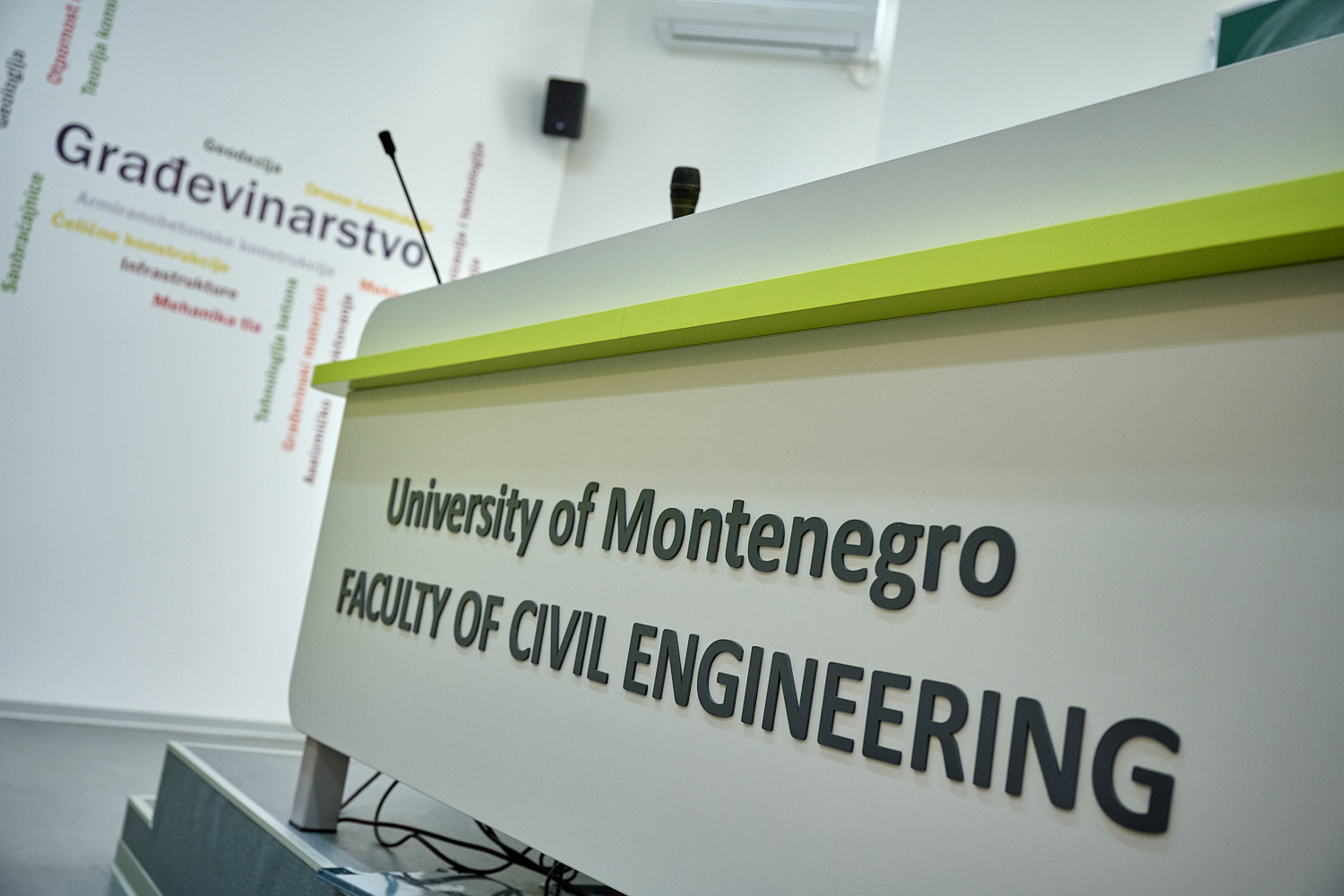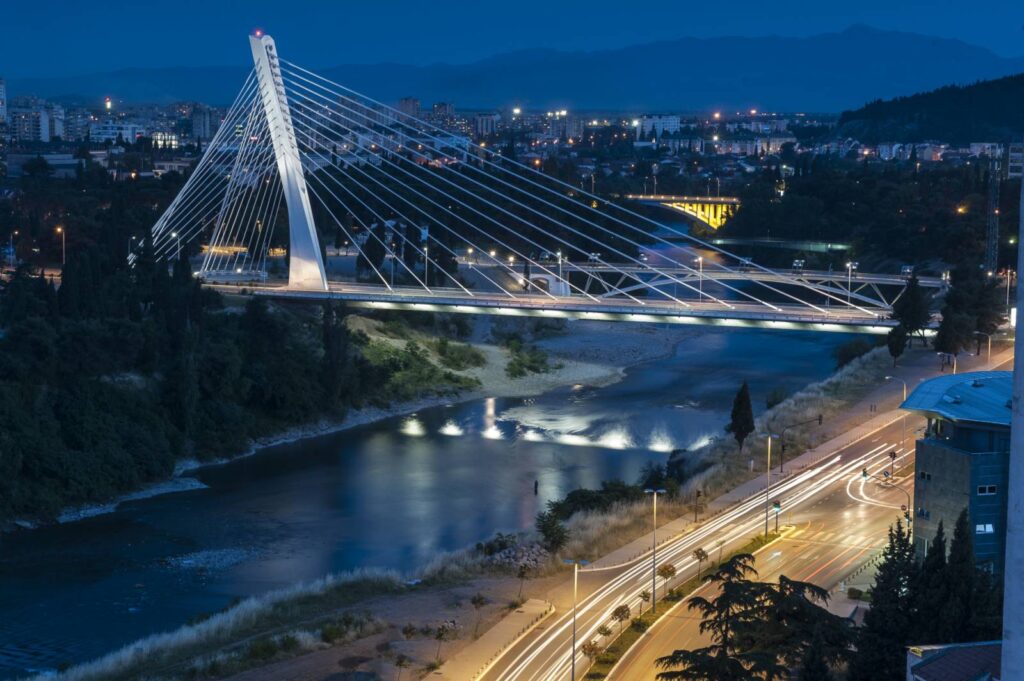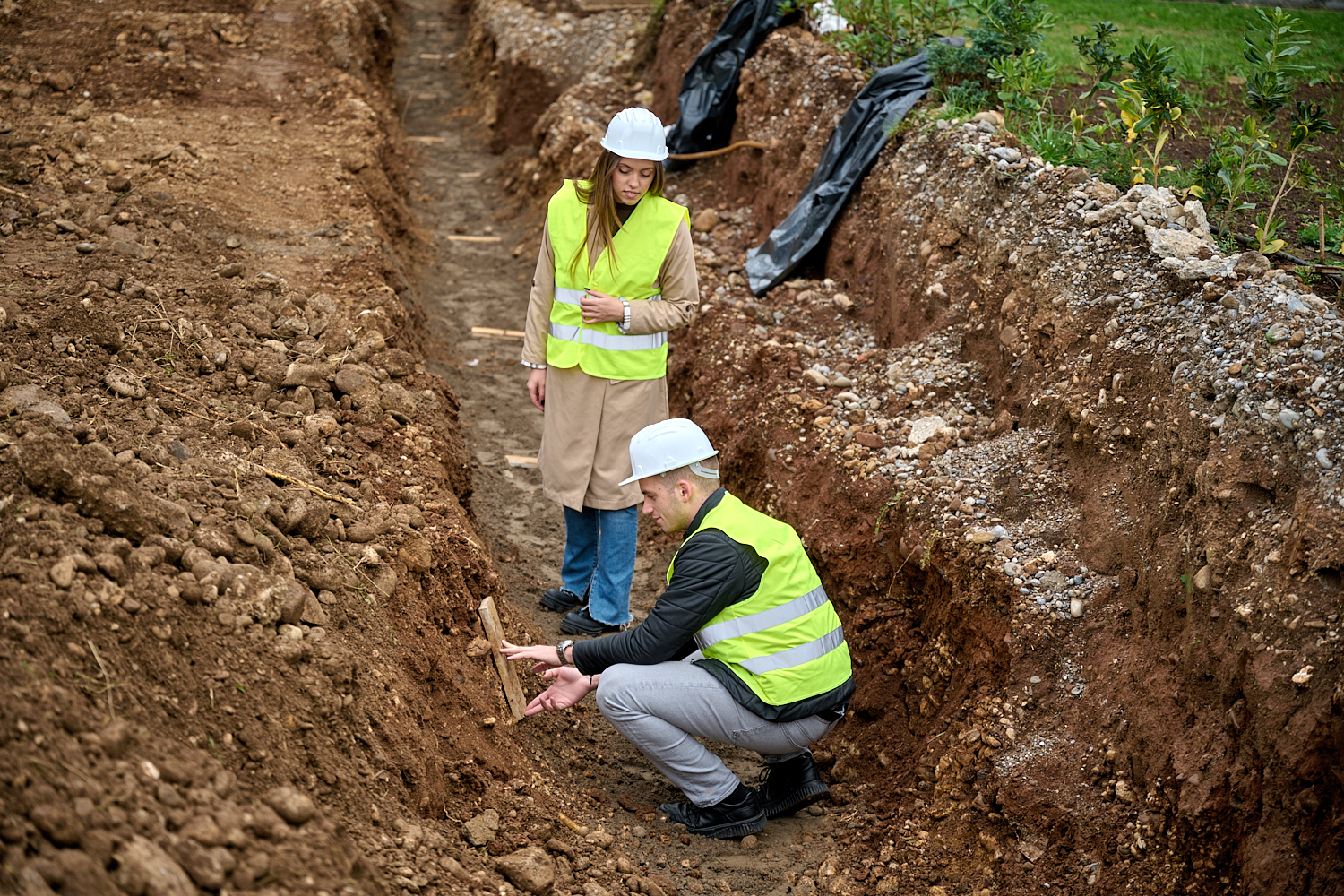Ulićević: the momentum of the University of Montenegro must be sustained

Over its five decades of existence, the University of Montenegro has significantly shaped Montenegro and positively influenced many aspects of life for the Montenegrin population. Since its establishment in 1974, UCG has played a major role in refining and building the careers of many professionals and experts who have invested all their acquired knowledge and experience in the advancement of the University and Montenegro as a whole. One such doyen is Mladen Ulićević, a full professor at the Faculty of Civil Engineering at the University of Montenegro, author or co-author of 55 scientific research papers, co-author of three publications, and the author and responsible designer for more than 50 significant construction projects - bridges, residential and public buildings, and engineering structures, leading expert teams for over 20 expert analyses in the field of quality assessment of installed materials and seismic resistance evaluation of existing structures. However, Ulićević is most renowned for designing the monumental Millennium bridge, thus firmly inscribing himself in Montenegrin history.
In a special interview as part of the FuturUM campaign, Dr. Ulićević highlights the indissoluble link between the University of Montenegro and his career path, pointing out the common mission connecting his major work and UCG as the largest academic institution in Montenegro...
What role has the University of Montenegro and the Faculty of Civil Engineering, as its unit, played in your life and advancement? How much has it inspired and directed you towards further goals?
ULIĆEVIĆ: Considering that I have spent my entire working life at the Faculty of Civil Engineering at the University of Montenegro, you will understand why I say that it is my only home in a professional sense. I was part of the process of forming the Faculty of Civil Engineering, so I can say that we, in a way, “grew” together. The business and developmental policy of the University and the Faculty at that time established a principle that, until the formation of our own staff, teaching would be carried out by highly reputable and distinguished university professors from the former Yugoslavia. This was both a privilege and an opportunity for me, as well as for other young colleagues, as we had the chance to learn from the best in their scientific fields. The confirmation of the correctness of such a developmental path is the fact that today’s teaching staff at the Faculty of Civil Engineering are made up of teachers who were its best students. My pleasure and honor also lie in the fact that, as a collaborator and lecturer, I participated in their educational process. 
Inherently, being part of the University involves a commitment to ongoing improvement through research and educational work. I have found my calling and professional interests in this, evidenced by the fact that I have spent all 40 years of my career at the University, achieving credentials that are recognized and evaluated by the scientific and professional community. Scientific and teaching efforts essentially create a matrix of values through which individuals process and filter various events and occurrences, not just on a professional level but also in everyday life: origins, genesis, cause, effect, influence, questions, doubts, what next and how to proceed... these are all steps leading to a more refined solution in planning or establishing a correct stance on a subject. On the other hand, I admit that sometimes, due to such a detailed approach, I can be seen as “demanding” by those around me, friends, and family.
How significant have the students and professors of UCG been in the development of modern Montenegro?
ULIĆEVIĆ: I believe that each individual contributes most significantly to the development of society by performing their job and activities in the best possible way. This is equally, if not more, applicable to our academic community members: the students, who need to successfully and timely acquire the necessary knowledge that qualifies them for competent integration into the workforce in Montenegrin public institutions and companies; the UCG faculty members, who are supposed to ensure the transfer of modern knowledge and skills through innovation in the teaching base, and enhance the Universitys and the nations reputation through their scientific work. I am convinced that this is a continuous task and the most crucial mission of the University.
More specifically, I would like to talk about what I consider the significant contributions of the Faculty of Civil Engineering. For this occasion, I would highlight two particular aspects.
In the years following the catastrophic earthquake in Montenegro on April 15, 1979, there was a tremendous need to develop an engineering workforce capable of engaging in the reconstruction of the devastated area and the construction of new residential and public buildings and vital infrastructure in Montenegro. The curricula and programs at the Faculty of Civil Engineering, with the assistance of renowned experts and scientific institutions from the former Yugoslavia and abroad, were designed to include modern theories, experiences, and principles of earthquake engineering. I am pleased and proud to say that the civil engineers who graduated from the Faculty of Civil Engineering at the University of Montenegro possess knowledge and skills whose implementation in construction practice contributes to a more reliable reduction of risks in the event of future devastating earthquakes.
Secondly, in the design and construction of the Smokovac-Mateševo highway section, the Faculty of Civil Engineering played a leading role. The preliminary project was completed in 2008, and faculty members participated in the revision of the Main project, supervision of the construction works, and the technical acceptance of this infrastructural megaproject, which is of exceptional importance for integrating the northern and southern parts of Montenegro into a unified space and its balanced development. Indeed, it can be said that the Montenegrin highway, along with the "Moračica" bridge as its key feature, is a product of local intelligence, and the name of the University of Montenegro is highly embedded in it, which has not been sufficiently recognized so far.
What was the design process like for the Millennium bridge, and how does it feel to see something so monumental every day and know that you played a significant part in it?
ULIĆEVIĆ: At an anonymous international competition organized by the Municipality of Podgorica in mid-1999, my bridge design was selected as the first-prize winner, which, by the competition code, was given the widely accepted name Millennium. I based the design idea on the concept that the new bridge over the Morača should symbolize the aspirations of the modern age at the transition to the new millennium, with its originality, contemporary form, and construction concept. In designing this type of bridge with inclined cables, due to the sensitivity of this system to significant deformations, it was necessary to apply the procedures and postulates of certain specific disciplines of the Theory of Structures, which goes beyond the routine practices in the analysis of bridge constructions.
Certainly, the positive reviews from both the public and professionals are gratifying and serve as a form of confirmation that something has been created that advocates for being a public good, with its functionality and aesthetic values. But more than that, for me, this reference has a broader mission that aligns with the Universitys mission: the structural strength of the bridge and its expressiveness affirm the necessity of belonging to a modern, well-developed, and reliable society founded on knowledge. It also confirms the capacity and credibility of the academic community to which I belong to contribute to the development and progress of society.
This year marks the 50th anniversary of UCG, and next year will be the 20th anniversary of the opening of the Millennium Bridge. How do you plan to commemorate this?
ULIĆEVIĆ: Anniversaries are an opportunity for retrospection, but also for affirming further work and development of the University. At the international conference "Civil Engineering - Science and Practice" held at the beginning of March in Kolašin, we dedicated a special panel discussion - a round table where we discussed education challenges in civil engineering and the Universitys position in this process.
As for the "Millennium" bridge, I would like that in the 20th anniversary year of its commissioning, one of my colleagues gets the opportunity to achieve a similar or even better reference, and I am confident that they possess the necessary scientific and professional capacities for such an achievement.
How would you encourage young people to dedicate themselves to the construction profession and correct the mistakes that have led to construction in Montenegro being mentioned in a negative context?
ULIĆEVIĆ: I have already emphasized that acquiring quality knowledge and skills is essential for proficiently performing any job, including engineering activities. Also, I have assessed that civil engineers in Montenegro, for the most part, have the capacity for successful work on designing and constructing buildings so that I do not believe this is one of the dominant causes of negative phenomena in our construction industry. Poor planning documents in Montenegrin cities have enabled massive construction of residential buildings and an inappropriate and uncritical consumption of space, which is an essentially non-renewable valuable resource. Under such conditions, engineers have a limited scope of action and are left to conscientiously care about the quality of projects and executed works. Besides, they also have the task of, as far as possible, controlling sometimes megalomaniac demands of state and private investors and, with their knowledge and reasoned analyses, bringing them within rational limits. 
What message would you give to the University for its 50th anniversary? What advice would you offer for the future?
ULIĆEVIĆ: In the past, particularly in the initial decades of the Universitys operation, scientific research was mostly individual, based on the more or less successful work of individuals who were often pioneers in their fields for Montenegro. Recently, there has been a noticeable increase in scientific research at the University, which should be strongly supported at an institutional level. New energy could be infused by forming stronger and more numerous thematic research teams at the faculties and the University, thereby increasing the capacity for participation and collaboration on international projects and thus creating conditions for an even better positioning on the global research map.
The strength of an institution stems from the reputability of its people, but the reverse is also true: strong institutions provide a greater chance for individual successes. In this institutional-personal interaction, it is crucial to work on enhancing the sense of belonging of every individual to the University and its units and to affirm the fundamental principle of giving and reciprocating. Personally, I am convinced that working in this way has brought me much.
As we are in an Olympic year, let it end with: citius, altius, fortius! The momentum of the University must be sustained!
Photo: Private archive, Capital city Podgorica, Podgorica Tourist Organization, UCG (University of Montenegro)

